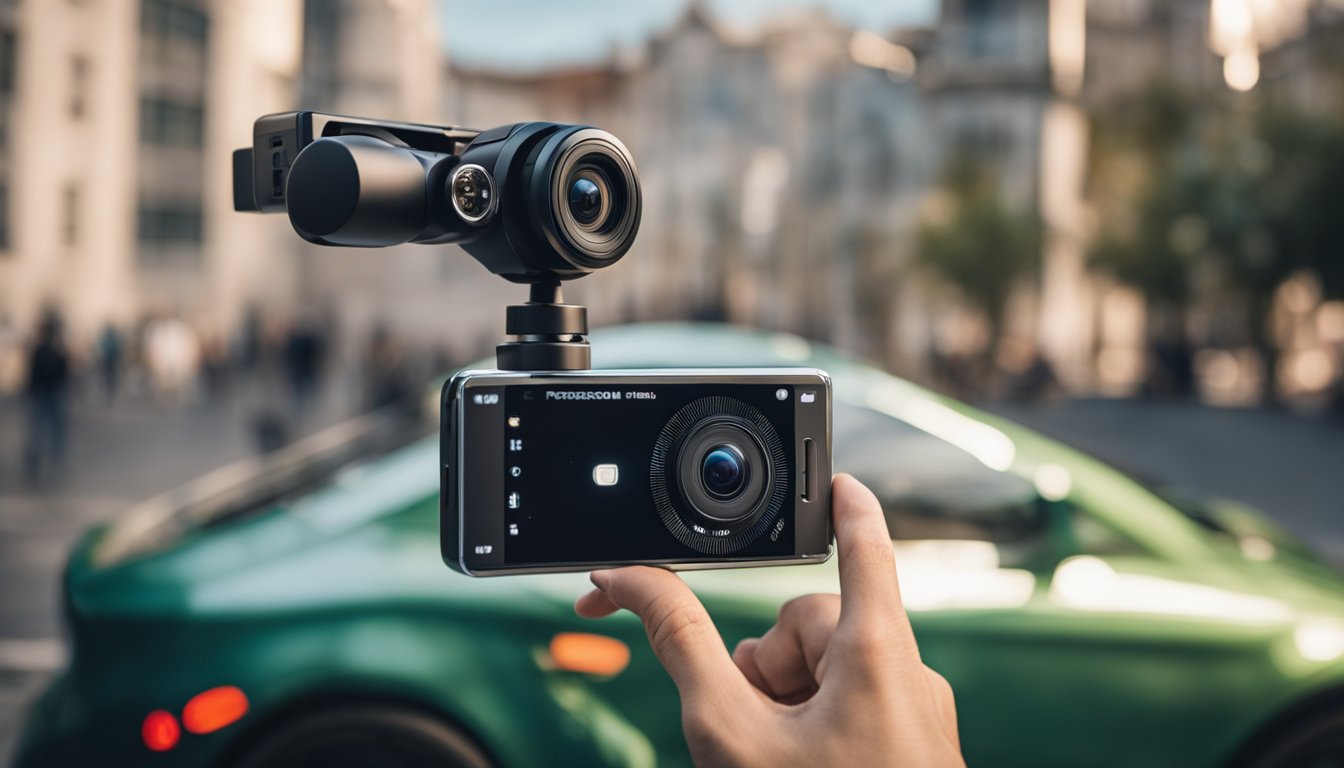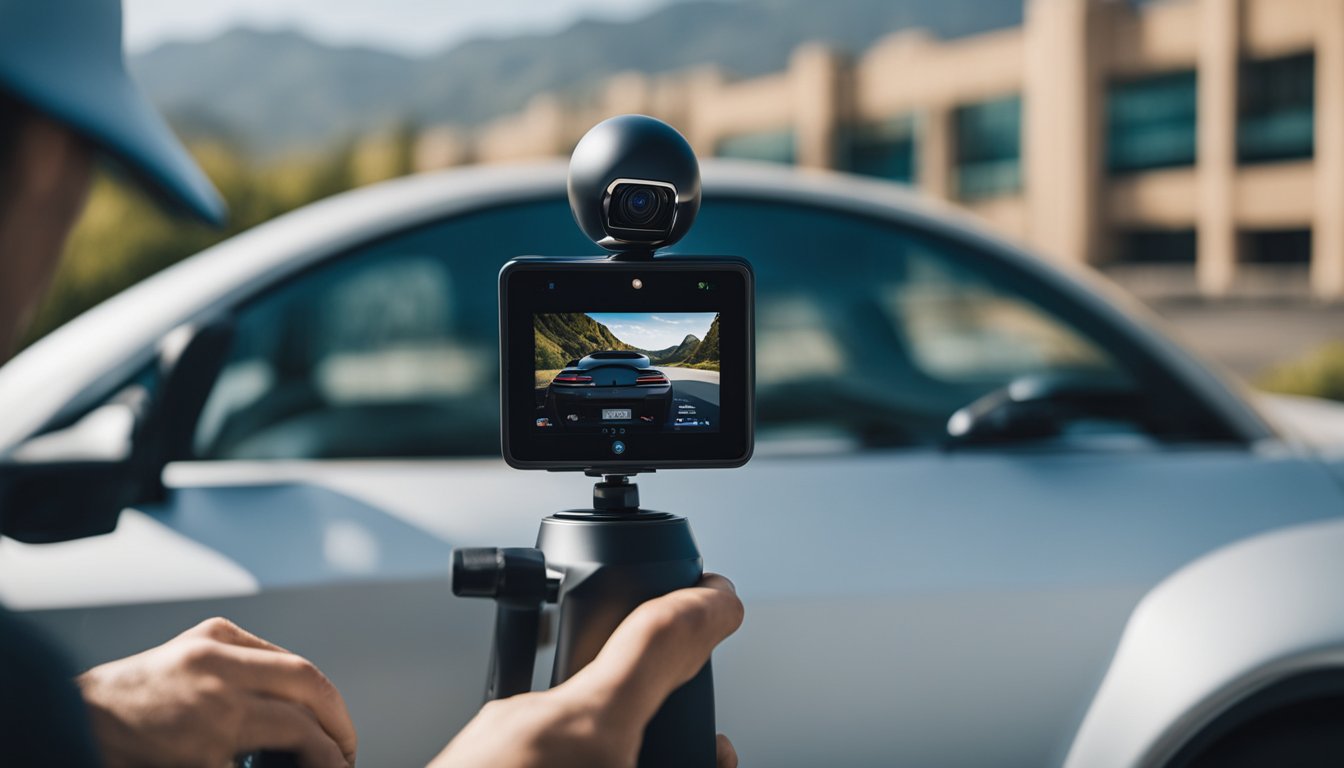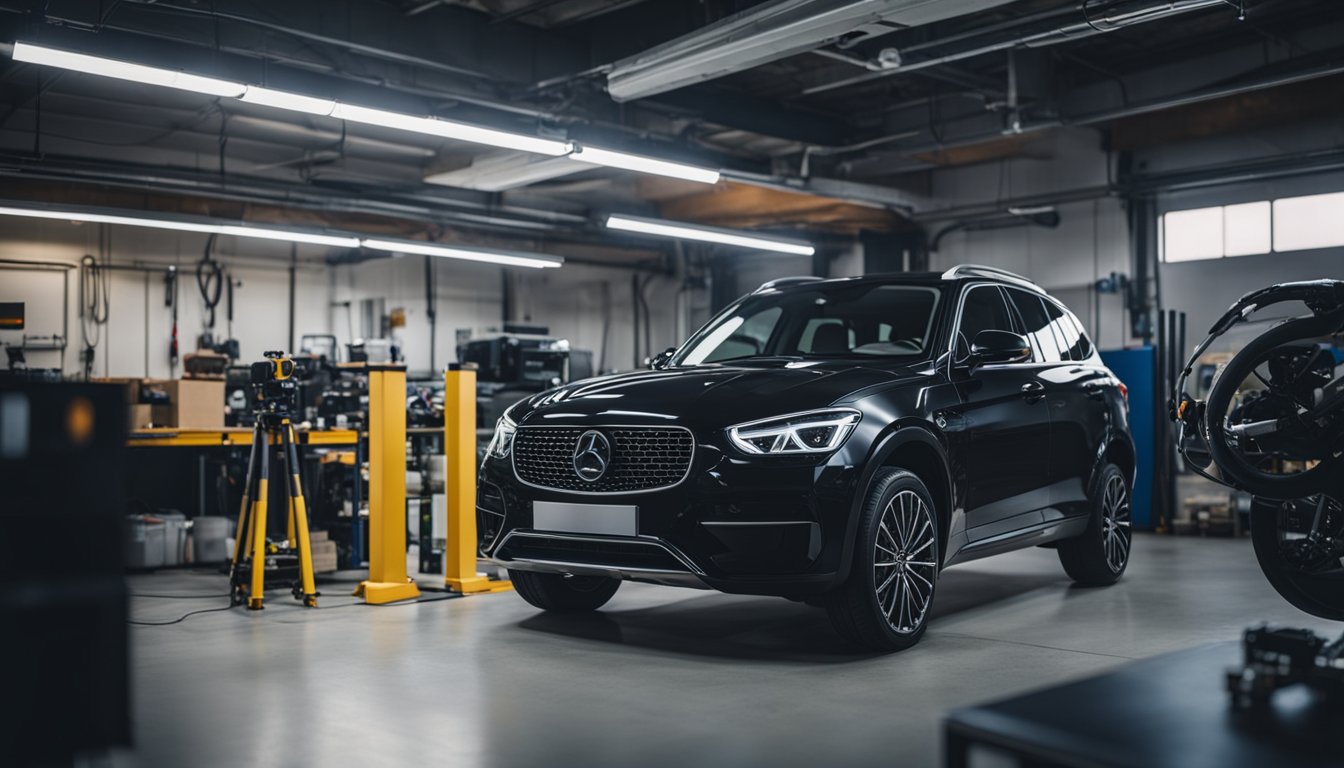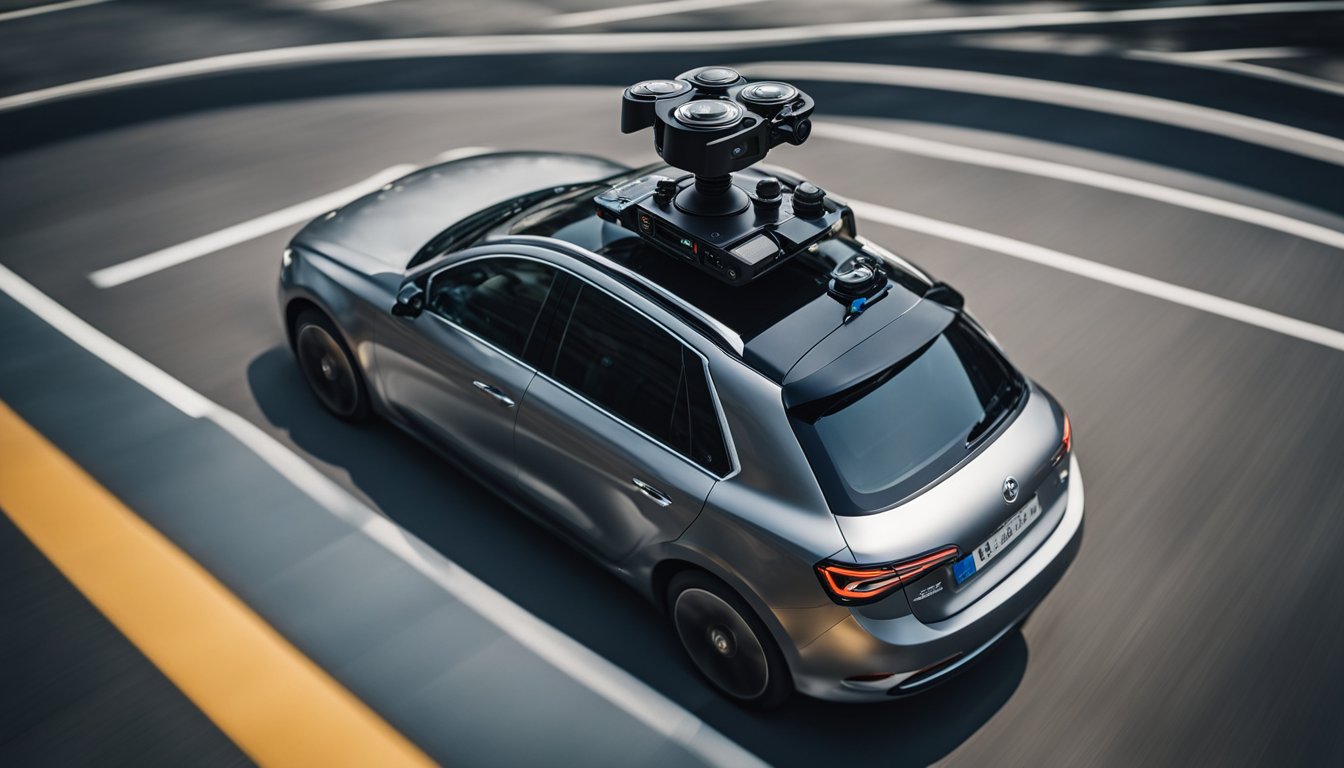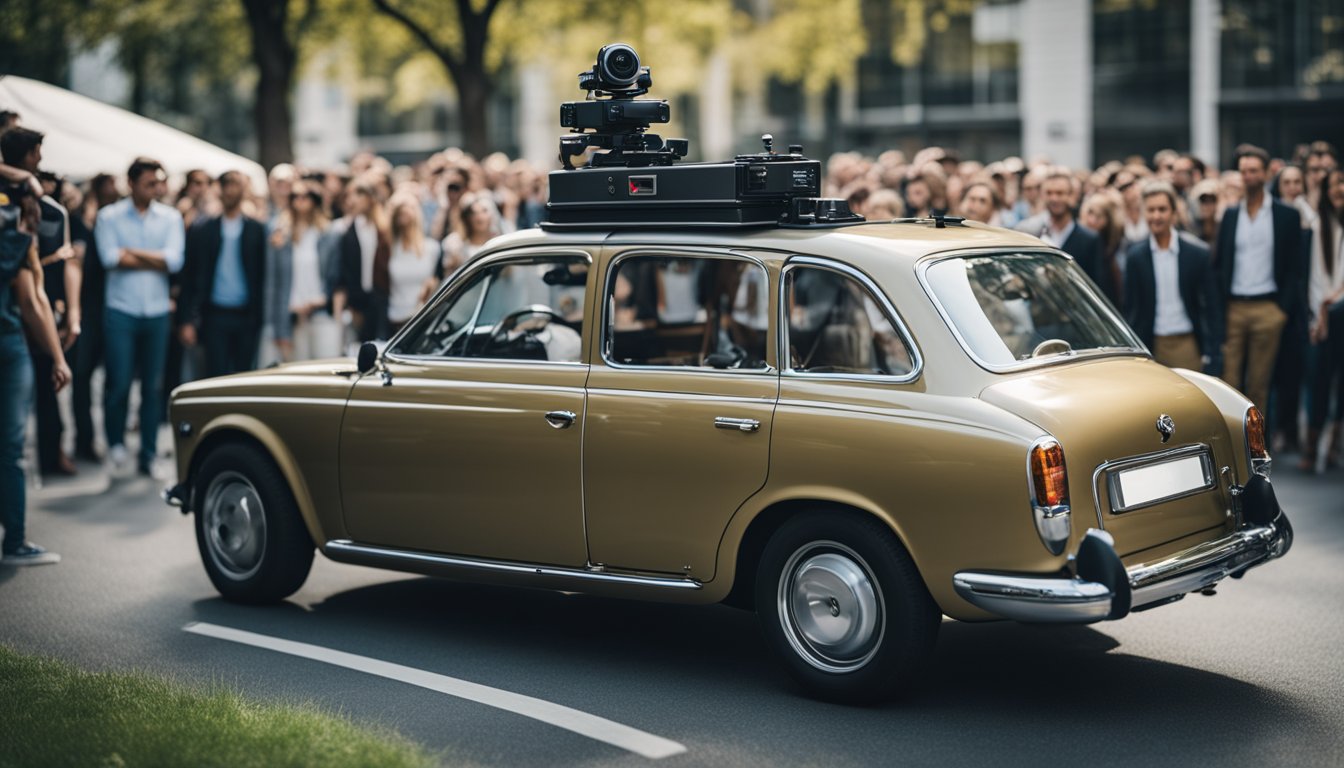Adding a 360 camera to your car is a great way to enhance your driving experience. With a 360-degree view, you can see everything around your vehicle, including blind spots. This can help you avoid accidents and make parking and maneuvering in tight spaces much easier. If you’re interested in adding a 360 camera to your car, this article will guide you through the process.
In this article, you will learn about the essential components of a 360 car camera system, the installation process, wiring and power considerations, calibrating your system, and integrating cameras with vehicle systems. You’ll also discover how to select the right 360 camera for your car, how to maximize parking and maneuvering efficacy, and how to maintain and upgrade your system. Additionally, you’ll explore the cost-benefit of a 360 camera system and learn about additional features and accessories that can enhance your driving experience.
Key Takeaways
- Adding a 360 camera to your car can enhance your driving experience and help you avoid accidents.
- Essential components of a 360 car camera system include cameras, monitors, and wiring.
- To maximize the efficacy of your 360 camera system, you should select the right camera for your car, calibrate your system, and integrate cameras with vehicle systems.
Understanding 360 Camera Systems
https://www.youtube.com/watch?v=xqWkJJOcU4g&embed=true
Adding a 360-degree camera system to your car can significantly enhance your driving experience. A 360-degree camera system utilizes multiple cameras around the vehicle to create a bird’s-eye view image. This allows you to see all angles around your car on a single screen, making parking and maneuvering in tight spaces much easier.
Technology and Functionality
The camera system works by capturing images from multiple cameras located around the vehicle and then processing them to create a seamless, panoramic view of the car’s surroundings. The video from the panoramic image processing software is shown on an HMI (Human Machine Interface), which is often the screen of the infotainment system in your car or a stand-alone in-car LCD monitor that comes with a windshield mounting suction cup or dash mount stand.
Benefits for Safety and Maneuvering
360-degree cameras provide improved visibility and safety when driving. With this camera system, you can see all around your car, including blind spots, making it easier to maneuver in tight spaces, park, and reverse. Additionally, the camera system can help you avoid accidents by providing a comprehensive view of the surroundings. This is especially useful when backing up, changing lanes, or merging onto a busy highway.

In summary, adding a 360-degree camera system to your car is an excellent upgrade that can significantly improve your driving experience. With this camera system, you can enjoy improved visibility, safety, and maneuverability.
Selecting the Right 360 Camera for Your Car
Adding a 360 camera to your car can enhance your driving experience by improving visibility and safety. However, selecting the right camera for your car can be a daunting task. In this section, we will discuss the factors you should consider when selecting the right 360 camera for your car.
Compatibility with Car Models
Before purchasing a 360 camera for your car, ensure it is compatible with your car model. Some car models have built-in 360 cameras, while others require an aftermarket installation. For instance, Toyota, Audi, BMW, and Mercedes-Benz have built-in 360 cameras in some of their models. On the other hand, Ford does not have built-in 360 cameras in any of their models.
Resolution and Image Quality
When selecting a 360 camera for your car, consider the resolution and image quality. A high-resolution camera will provide clear and detailed images, while a low-resolution camera will provide blurry and pixelated images. Additionally, consider the field of view of the camera. A camera with a wide field of view will capture more of your surroundings, while a camera with a narrow field of view will capture less.
« Does Nexon Offer 360 Camera for Gaming?
How to Install 360 Degree Camera in Creta: A Friendly Guide »
When it comes to camera quality, some of the best 360 cameras for cars include the Garmin Dash Cam Tandem, the Thinkware F800 Pro, and the BlackVue DR900S-2CH. These cameras offer high-resolution images and a wide field of view, making them suitable for most car models.
In conclusion, selecting the right 360 camera for your car requires careful consideration of compatibility with your car model and resolution and image quality. With the right camera, you can enhance your driving experience and improve safety on the road.
Essential Components of a 360 Car Camera System
https://www.youtube.com/watch?v=gkdTFsMK8FA&embed=true
If you’re planning to add a 360 camera to your car, you need to know the essential components that make up a 360 car camera system. Here are the two main components you need to consider:
Multiple Cameras
A 360 car camera system consists of multiple cameras that capture video footage from different angles. These cameras are strategically placed around the car to provide a full 360-degree view of the surroundings. The number of cameras required for a 360 car camera system varies depending on the car model and the level of coverage you want.
Typically, a 360 car camera system includes a front camera, rearview camera, and two side cameras. These cameras work together to provide a panoramic view of the car’s surroundings. The cameras capture high-quality video footage, which is then processed by software to create a seamless 360-degree view.
Integration with Infotainment Screen
The video footage captured by the cameras is displayed on the car’s infotainment screen. The infotainment screen is the central hub for the 360 car camera system, allowing you to view the video footage from different angles.
The infotainment screen can be a standalone LCD monitor that comes with a windshield mounting suction cup or dash mount stand. Alternatively, it can be integrated into the car’s existing infotainment system. The screen displays a live feed from the cameras, allowing you to see what’s happening around the car in real-time.
In conclusion, a 360 car camera system consists of multiple cameras strategically placed around the car and an infotainment screen that displays the video footage captured by the cameras. With this system, you can enjoy enhanced visibility and safety while driving.
Installation Process
https://www.youtube.com/watch?v=TbVgCchelTg&embed=true
Adding a 360 camera to your car can be a great way to enhance your driving experience. The installation process can seem daunting, but with the right tools and equipment, it can be a DIY project. In this section, we will cover the installation process and the tools and equipment required.
Tools and Equipment Required
Before starting the installation process, make sure you have the following tools and equipment:
- 360 camera
- Mounting bracket
- Power drill
- Screws
- Wiring harness
- Electrical tape
- Screwdriver
- Wire strippers
It’s important to choose a 360 camera that is compatible with your car and has the necessary features for your needs. The mounting bracket should be sturdy and secure, and the wiring harness should be long enough to reach your car’s power source.
Professional vs DIY Installation
If you’re not comfortable with DIY projects or don’t have the necessary tools and equipment, it’s best to leave the installation to a professional. A professional installation can ensure that the camera is installed correctly and safely.
However, if you’re up for the challenge, a DIY installation can save you money and give you a sense of accomplishment. Make sure to follow the manufacturer’s instructions carefully and take your time during the installation process. It’s important to test the camera before driving to ensure that it’s working properly.
In conclusion, adding a 360 camera to your car can be a great way to enhance your driving experience. Whether you choose to do a DIY installation or leave it to a professional, make sure to have the necessary tools and equipment and follow the manufacturer’s instructions carefully.
Wiring and Power Considerations
https://www.youtube.com/watch?v=olhrPau4AIA&embed=true
Connecting to a Power Source
When installing a 360 camera in your car, it is crucial to select a power source that is reliable and safe. Most 360 cameras can be powered by either a battery pack or by plugging it into an electrical outlet. If you choose to use a battery pack, make sure it has enough power to last for the entire duration of your trip. On the other hand, if you decide to plug it into an electrical outlet, ensure that the outlet is compatible with the camera’s voltage requirements.
Wiring Layout and Safety
When wiring your 360 camera, it is essential to follow the manufacturer’s instructions carefully. Ensure that the wiring layout is neat and tidy, and that the wires are not exposed or tangled. A tangled wire can be a safety hazard, as it can get caught in the pedals or steering wheel, causing an accident. You can use cable ties to keep the wires organized and prevent them from getting tangled.
It is also important to ensure that the wiring is safe and secure. You can use electrical tape or heat shrink tubing to cover the exposed wires and prevent them from short-circuiting. Additionally, make sure that the wiring does not obstruct any of the car’s controls or the driver’s view.
In conclusion, wiring and power considerations are crucial when installing a 360 camera in your car. Make sure to select a reliable power source, follow the manufacturer’s instructions carefully, and ensure that the wiring is neat, tidy, and safe. By doing so, you can enjoy the benefits of a 360 camera without compromising your safety or the safety of others on the road.
Calibrating Your 360 Camera System
https://www.youtube.com/watch?v=RsZN8LgfvEw&embed=true
Adding a 360 camera to your car can enhance your driving experience and safety. However, to ensure that the camera works properly, it is important to calibrate the system correctly. In this section, we’ll go over the steps to calibrate your 360 camera system and troubleshoot common issues.
Camera Calibration Steps
- Find a flat, level surface to park your car. This will ensure that the camera calibration is accurate.
- Turn on your car and the 360 camera system.
- Follow the manufacturer’s instructions to access the camera calibration screen.
- Select the option to calibrate the cameras.
- The system will prompt you to drive the car in a straight line at a slow speed. Follow the instructions carefully.
- Once the calibration is complete, the system will display a message indicating that the process was successful.
Troubleshooting Common Issues
If you’re experiencing issues with your 360 camera system, here are some common problems and solutions:
- Camera misalignment: If the camera is not aligned properly, the system may not work as intended. Check the camera placement and adjust it as necessary.
- Camera obstruction: If there is an object blocking the camera’s view, the system may not work properly. Ensure that there are no obstructions in the camera’s field of view.
- Calibration errors: If the calibration process fails, try restarting the system and repeating the process. If the problem persists, contact the manufacturer for assistance.
- System errors: If the system is not functioning properly, try restarting the car and the camera system. If the problem persists, contact the manufacturer for assistance.
By following these steps and troubleshooting tips, you can ensure that your 360 camera system is calibrated properly and working as intended.
Integrating Cameras with Vehicle Systems
https://www.youtube.com/watch?v=omZ6gX2aLqQ&embed=true
Adding a 360 camera to your car can be a great upgrade to enhance visibility and safety while driving. But to make the most of this upgrade, you need to integrate the camera with your vehicle’s existing safety features and software.
Linking to Existing Safety Features
Most modern cars come equipped with advanced safety features like blind spot monitoring, lane departure warning, and automatic emergency braking. These features rely on sensors and cameras to detect potential hazards and alert the driver. When you add a 360 camera to your car, it’s important to make sure that it’s linked to these existing safety features.
One way to do this is to install a camera system that comes with a built-in interface that can communicate with your car’s safety systems. Another option is to have the camera system professionally installed by a mechanic who can ensure that it’s properly integrated with your car’s existing systems.
Software Updates and Upgrades
As with any electronic device, the software that powers your 360 camera can be updated and upgraded to improve performance and add new features. It’s important to keep your camera’s software up to date to ensure that it’s functioning properly and taking advantage of the latest advancements in camera technology.
Many camera systems come with software that can be updated over the air, meaning that you don’t need to take your car into a mechanic to get the latest software. However, some camera systems may require a more hands-on approach, so it’s important to check the manufacturer’s instructions for updating the software.
Overall, integrating a 360 camera with your car’s existing safety features and software is key to getting the most out of this upgrade. By ensuring that your camera is properly linked to your car’s safety systems and keeping the software up to date, you can enjoy a safer and more enjoyable driving experience.
Maximizing Parking and Maneuvering Efficacy
https://www.youtube.com/watch?v=qtYv8ASUr3Q&embed=true
Utilizing Cameras for Parking Assistance
One of the most significant benefits of installing a 360 camera in your car is the ability to utilize it for parking assistance. With a 360-degree view, you can see all around your vehicle, making it easier to maneuver into tight parking spaces. The camera system can detect objects that are out of your line of sight, such as poles, curbs, and other vehicles. It can also help you avoid collisions by alerting you when you are getting too close to an object.
When parking, you can switch to the camera view to see the entire area around your car. This feature is especially useful when parking in crowded areas or when parallel parking. With the camera view, you can easily see if there are any obstacles or pedestrians in your way, making it easier to park safely and efficiently.
Overcoming Blind Spots and Narrow Spaces
Blind spots are a common problem for drivers, especially when parking or maneuvering in tight spaces. With a 360 camera, you can overcome these blind spots and have a better view of your surroundings. The camera system can detect objects that are out of your line of sight, such as pedestrians or other vehicles, and alert you to their presence.
Narrow spaces can also be challenging to navigate, but with a 360 camera, you can see all around your vehicle, making it easier to maneuver through tight spaces. The camera system can detect objects that are close to your car, and alert you to their presence, making it easier to avoid collisions.
In conclusion, a 360 camera can be a valuable addition to your car, especially when it comes to parking and maneuvering. With the ability to see all around your car, you can avoid blind spots and park safely and efficiently.
Maintaining and Upgrading Your System
https://www.youtube.com/watch?v=RbsNGEqGxlg&embed=true
Once you have installed your 360 camera in your car, it is important to maintain it properly to ensure that it continues to function well and provide high-quality images. Additionally, you may want to consider future upgrades and expansions to enhance the functionality of your system.
Routine Maintenance
Routine maintenance is crucial to ensure that your 360 camera system continues to operate at its best. Here are some tips to help you maintain your system:
-
Keep the camera lenses clean: Dust, fingerprints, and other debris can affect the image quality of your camera. Clean the lenses regularly with a microfiber cloth or lens cleaning solution to ensure that your camera captures clear and sharp images.
-
Check the camera’s power source: Make sure that the camera’s battery is fully charged or that it is connected to a reliable power source. A low battery or power outage can cause your camera to stop working.
-
Inspect the camera mount: Check the camera mount regularly to ensure that it is secure and stable. Loose or wobbly mounts can cause the camera to move and produce shaky images.
-
Store the camera properly: When you’re not using your camera, store it in a cool, dry place to prevent damage from humidity, heat, or direct sunlight.
Future Upgrades and Expansions
If you want to enhance the functionality of your 360 camera system, you may want to consider future upgrades and expansions. Here are some options to consider:
-
Upgrade your camera: If you’re not satisfied with the image quality of your current camera, consider upgrading to a camera with higher resolution or better features.
-
Add more cameras: Depending on the size of your car, you may want to add more cameras to your system to capture a wider range of angles and views.
-
Install a better monitor: If you’re having trouble seeing the images on your current monitor, consider upgrading to a larger or higher-resolution monitor for better visibility.
-
Install a recording device: If you want to record your driving footage, consider installing a recording device that can store your footage for later viewing.
By following these tips and considering future upgrades and expansions, you can ensure that your 360 camera system provides high-quality images and enhances your driving experience.
Considering the Cost-Benefit of a 360 Camera System
Installing a 360 camera system in your car is a significant investment that can offer a range of benefits, including increased safety, better maneuverability, and improved security. However, before you decide to add a 360 camera system to your car, it is important to consider the cost-benefit of such an investment.
Initial Investment
The initial cost of adding a 360 camera system to your car can vary depending on the type of system you choose and the complexity of the installation. A basic system can cost around $200, while a more advanced system can cost upwards of $1,000. Additionally, installation costs can range from $200 to $500, depending on the complexity of the installation.
While the initial investment may seem high, it is important to consider the long-term benefits of a 360 camera system. A 360 camera system can help prevent accidents, reduce insurance costs, and increase the resale value of your car.
Long-Term Value and Security
In addition to the initial investment, it is important to consider the long-term value and security of a 360 camera system. A 360 camera system can provide valuable evidence in the event of an accident, helping to protect you from fraudulent claims. Additionally, a 360 camera system can deter theft and vandalism, providing added security for your car.
Overall, the cost-benefit of a 360 camera system depends on your individual needs and budget. While the initial investment may seem high, the long-term benefits of increased safety, improved maneuverability, and added security can make the investment worthwhile. Consider your options carefully and choose the system that best fits your needs and budget.
Additional Features and Accessories
If you want to enhance your 360 camera system, there are several aftermarket kits and add-ons available that can help you achieve better visibility and coverage. Here are some options you might consider:
Aftermarket Kits and Add-ons
-
Wide-Angle Cameras: Adding additional cameras to your setup can give you a wider field of view and better coverage. Look for cameras with a wide-angle lens that can capture more of the surrounding area.
-
Real-Time View: Some kits come with a monitor that allows you to see a real-time view of your surroundings. This can be useful when parking or maneuvering in tight spaces.
-
Wireless Systems: Wireless systems can be more convenient to install and use. They can also be less prone to interference and signal loss.
Enhanced Visibility Options
-
Night Vision: Some cameras come with night vision capabilities, which can be useful if you often drive in low-light conditions.
-
Object Detection: Some systems can detect objects in your path and alert you with an audible warning. This can be especially useful when backing up or parking.
-
360-Degree View: A true 360-degree view can be achieved by adding cameras to all four sides of your vehicle. This can give you a complete view of your surroundings and help you avoid blind spots.
Remember, adding additional features and accessories can increase the cost of your 360 camera system. Be sure to choose options that are right for your needs and budget.
Frequently Asked Questions
What are the steps to install a 360-degree camera in my vehicle?
Installing a 360-degree camera in your car is a relatively simple process, but it may vary depending on the make and model of your vehicle. Generally, you will need to mount the cameras in strategic locations around your car, such as the front grille, side mirrors, and rear bumper. You will then need to connect the cameras to a central processing unit, which will stitch the footage together to create a panoramic view of your surroundings. For more detailed instructions, you can refer to this guide.
How much can I expect to pay for adding a bird’s eye view camera system to my car?
The cost of adding a bird’s eye view camera system to your car can vary depending on the brand and model you choose, as well as the complexity of the installation. On average, you can expect to pay anywhere from $200 to $800 for a quality 360-degree camera system. However, keep in mind that some high-end systems can cost upwards of $1,000 or more.
Are there any wireless 360 camera systems available for vehicles?
Yes, there are several wireless 360-degree camera systems available for vehicles. These systems use Wi-Fi or Bluetooth technology to transmit the footage from the cameras to a central processing unit, eliminating the need for messy wires and cables. However, keep in mind that wireless systems may be more prone to interference and signal loss, so it’s important to choose a reliable system from a reputable brand.
What should I consider when choosing a 360 camera kit for my car?
When choosing a 360 camera kit for your car, there are several factors to consider. First, make sure the kit is compatible with your car’s make and model. Next, consider the quality of the cameras and the resolution of the footage they produce. You should also look for a kit that includes a central processing unit with advanced stitching and image processing capabilities. Finally, consider the price and any additional features, such as wireless connectivity or compatibility with third-party apps.
Can I install a 360-degree camera system in any type of car?
In general, you should be able to install a 360-degree camera system in any type of car, as long as you have the necessary mounting hardware and wiring. However, keep in mind that some cars may be more difficult to install cameras on than others, especially if they have unique body shapes or designs. If you’re unsure whether a 360-degree camera system will work with your car, consult with a professional installer or contact the manufacturer for more information.
What are the benefits of having a 360 camera on my car for racing purposes?
Having a 360-degree camera on your car can be incredibly beneficial for racing purposes. Not only does it provide a complete view of your car’s surroundings, but it can also help you identify potential hazards and obstacles on the track. Additionally, some 360-degree camera systems come with advanced features like real-time telemetry and data logging, which can help you optimize your driving performance and improve lap times.

